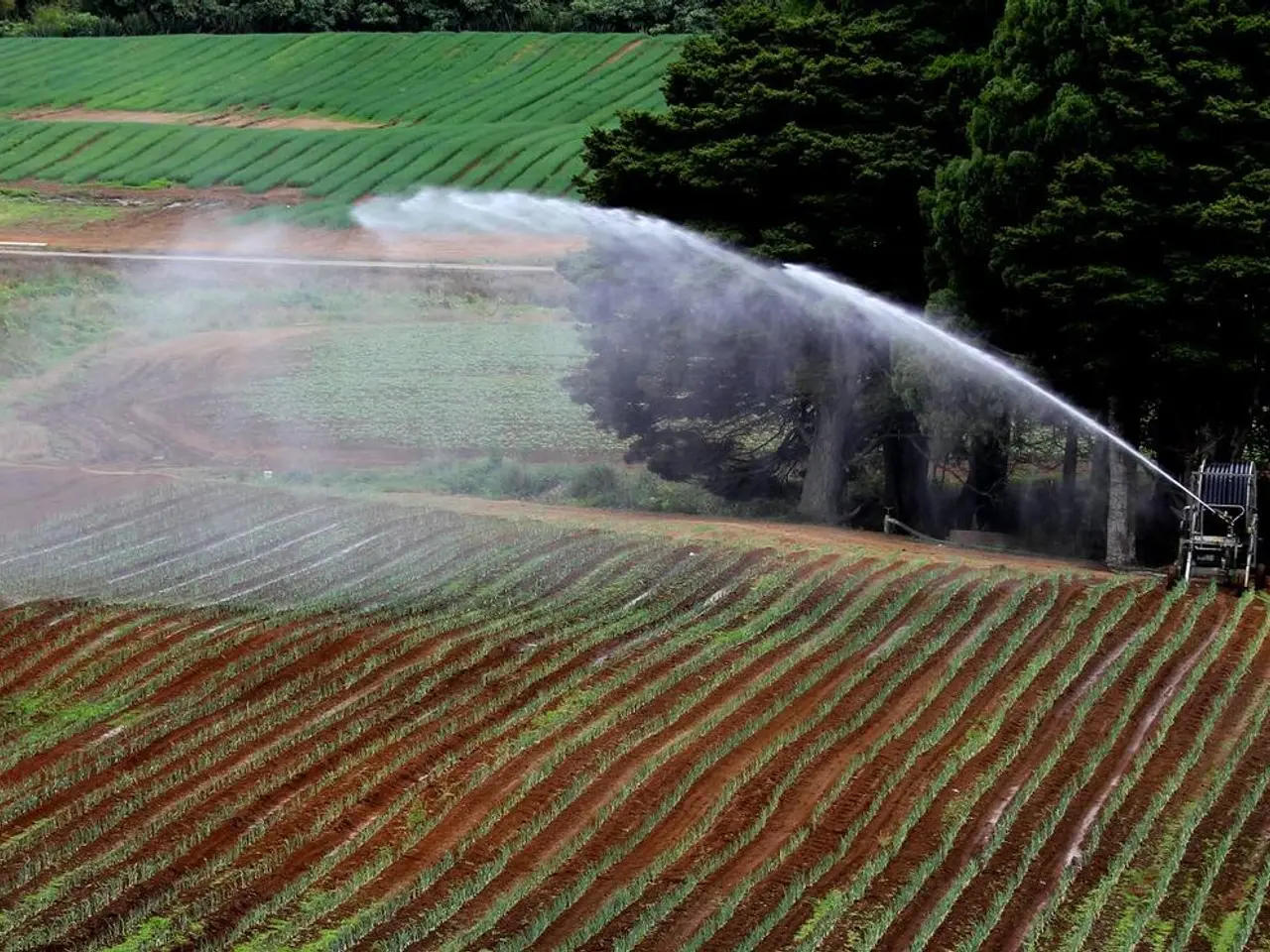Strategies for Revitalizing Soil in Sustainable Agriculture: A Look at Permaculture Methods
In an effort to revitalize our planet's soil and promote sustainable agriculture, communities are turning to permaculture—a holistic approach to agriculture that focuses on improving soil health, biodiversity, and ecosystem services.
By mimicking natural ecosystems, permaculture aims to rebuild soil structure, microbiology, and nutrient cycles. Key scientific techniques include the use of microbial inoculants, composting and organic amendments, cover cropping and crop diversity, reduced soil disturbance, and water management techniques.
Microbial inoculants introduce beneficial bacteria and fungi into soil, restoring microbial life, breaking down organic matter into nutrients, and improving soil structure. Composting and organic amendments recycle farm and kitchen waste into nutrient-rich humus, enriching soil microbiology and reducing reliance on synthetic fertilizers.
Cover cropping and crop diversity balance nutrient uptake, replenish soil nutrients, and support a resilient soil microbiome, reducing nutrient depletion common in monoculture. Reduced soil disturbance preserves soil structure and fosters beneficial interactions between roots and soil microbes, promoting long-term soil health.
Water management techniques, such as slowing, spreading, and sinking water into soil, reduce runoff, enhance moisture retention, and improve resilience to extreme weather events.
The benefits of these permaculture soil restoration methods for sustainable agriculture include enhanced soil fertility and nutrient availability, greater soil structure and aeration, increased carbon sequestration, improved water retention and filtration, and promoted biodiversity and ecosystem resilience.
One successful example of soil restoration using permaculture methods is the Wadi Attir project. By using regenerative agriculture practices and natural farming methods, farmers can boost earthworm activity and create a better home for them.
Integrating biodiversity in soil restoration is vital for improving soil fertility, increasing crop yields, and enhancing ecosystem services. The non-dig method improves soil over three years by focusing on adding organic layers without harming the soil.
The Worldwide Permaculture Network lists over 1,957 projects worldwide that focus on restoring soil and managing land sustainably. It's crucial for communities to work together to make soil restoration happen, as it is key to making our planet healthier and supporting great farming and nature.
When using regenerative agriculture and ecological farming, it's essential to consider local laws and ethical standards, such as following ethical practices like fair labor and animal care. By focusing on rules and ethics, farmers help the environment and make food systems fairer.
In summary, permaculture soil restoration scientifically integrates microbial restoration, organic recycling, crop diversity, low disturbance, and water management to build fertile, resilient soils that underpin sustainable agriculture. This approach leads to improved crop yields, increased biodiversity, and enhanced ecosystem services, creating a better, more sustainable future for everyone.
- By employing regenerative agriculture and ecological farming strategies, we can boost soil health and promote a diverse range of microorganisms, such as earthworms, benefitting from their role in breaking down organic matter and enhancing soil quality.
- Conversely, reducing soil disturbance not only protects soil structure but also encourages beneficial interactions between roots and soil microbes, fostering long-term soil health and resilience.
- Water management techniques, like slowing, spreading, and sinking water into soil, not only minimize runoff but also improve water retention and filtration, ultimately increasing resistance to extreme weather events.
- Integrating companion planting in our agriculture practices can enhance biodiversity and ecosystem resilience while also promoting natural pest control, reducing the need for chemical inputs.
- In line with a holistic approach to agriculture and environmental science, adopting these permaculture methods can lead to improved nutrition, fitness-and-exercise, mental-health, climate-change mitigation, health-and-wellness, and overall environmental sustainability.
- Furthermore, rainwater harvesting, greywater recycling, and no-till farming practices can significantly decrease water consumption and soil erosion, minimizing our environmental footprint and combating the negative effects of climate change.
- Regenerative agriculture also has a positive impact on the health-and-wellness sector, as nutrient-dense, organically grown produce leads to improved diets and reduced health risks.
- Ultimately, engaging in soil restoration projects requires the collaboration of communities, environmental scientists, and farmers alike, with a shared dedication to promoting sustainable farming practices, encouraging biodiversity, and caring for the long-term wellbeing of the planet and its inhabitants.




